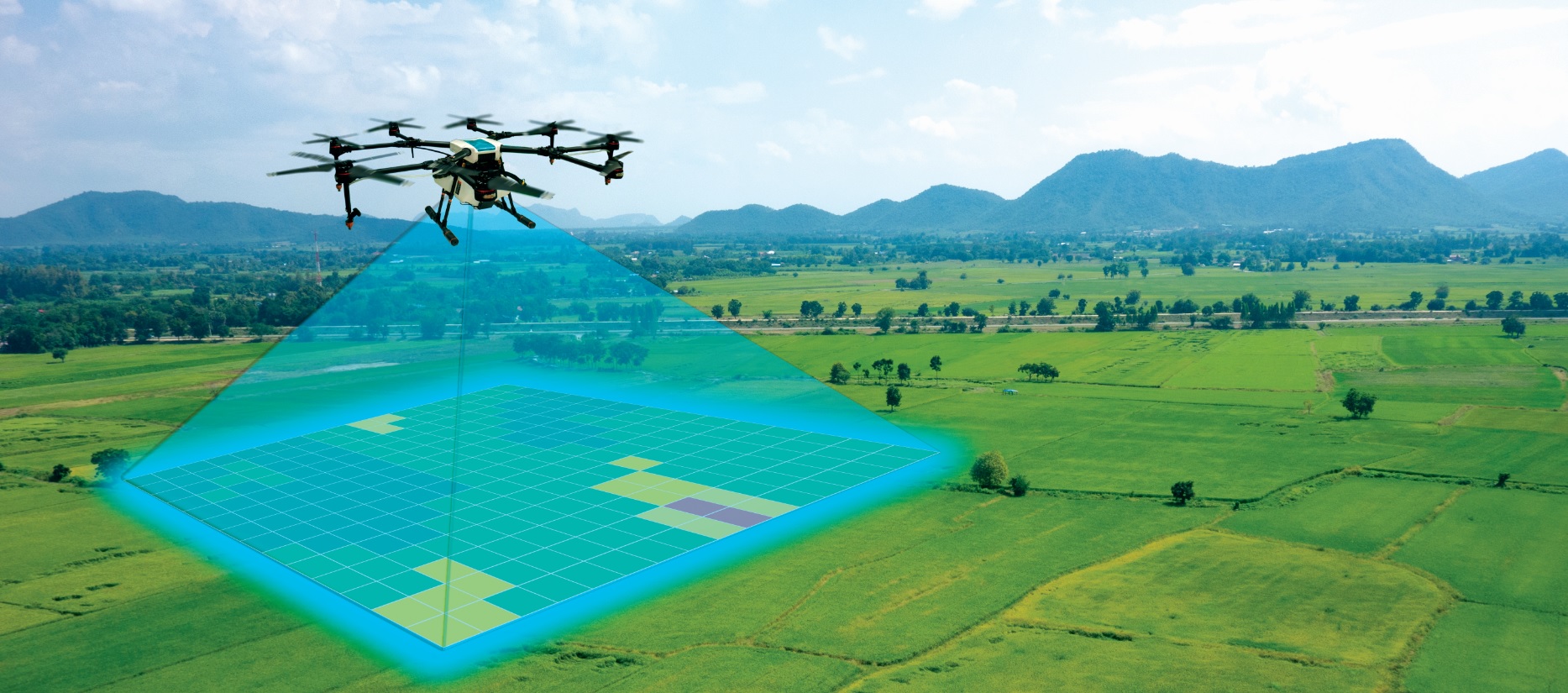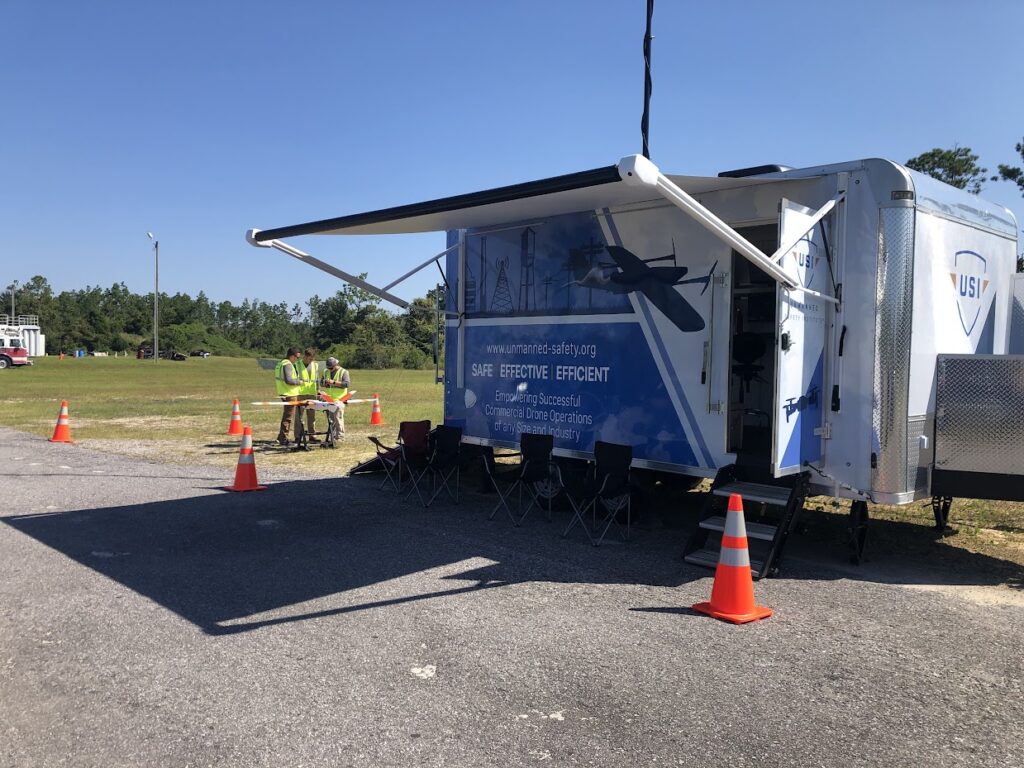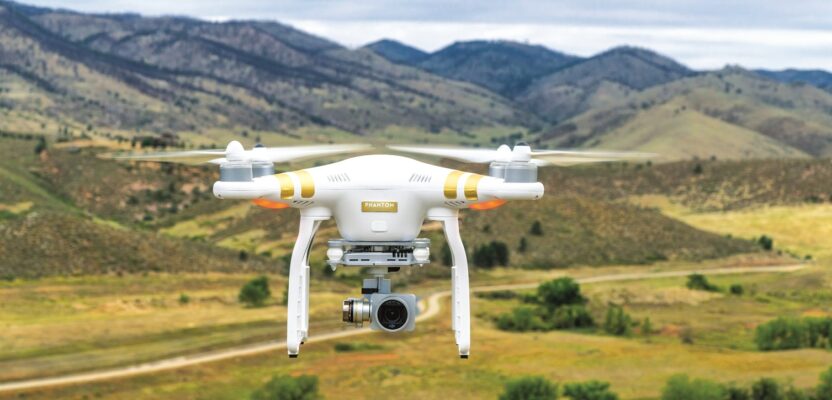As the Federal Aviation Administration (FAA) prepares to release its ruling covering uncrewed aircraft flights beyond visual line of sight (BVLOS) in the National Airspace (NAS) the entire industry is holding its breath preparing for a new era of certainty and expansion.
Aerial photogrammetry will be one of the immediate beneficiaries of this new policy in which drones will be able to fly according to their technical capabilities and not constrained by any legal issue. Today, many fixed-wing uncrewed aircraft can fly for over an hour, covering a large number of acres per flight and becoming, for the first time, a real competitor to crewed aviation.
There is no doubt that for years to come traditional aviation will be able fly higher and cover more area per flight than uncrewed aviation vehicles (UAVs), but the removal of the VLOS restriction will open the door to development and evolution of the later.

Drones used for mapping and other fields like research analysis, safety,rescue, and precision agriculture send data directly to tablets.
That still leaves the issue of aviation safety open and subject to a passionate debate. In an article in the August Issue of xyHt, we argued that perhaps the best outcome of this drone revolution would be the emergence of a new type of enterprise, which will specialize in just performing the flight and capturing the raw data, hence allowing land surveying companies to offer aerial photogrammetry services without having to become aviation enterprises as well.
But what happens if a particular land surveying company still wants to acquire drones and embark on performing its own uncrewed flights? Well, very simply, this company will become an aviation enterprise and subject to the requirements of the FAA and the legal and technological challenges that entails.
The first item on the agenda of any aviation company, crewed or uncrewed, is the issue of safety and for that crewed aviation companies implement costly and complicated safety management systems that help the execution of every flight under strict protocols that would help cultivate a culture of safety and sustainability.
These safety management systems were originally designed for passenger flights, and they seem to be an overkill for a small drone carrying a photogrammetry camera for short periods of time. So, is it fair to require of these emerging aerial mapping companies the implementation of an safety management systems that would cost more than the drone itself and take months to implement?

The Unmanned Safety Institute provides safety training for surveyors who want to get into the aviation business.
Certainly not, and here is where the Unmanned Safety Institute (USI) comes in. For years, USI has been adapting the complexity of safety management systems to the realities of the uncrewed world. We had a fascinating conversation with Josh Olds, CEO of USI during the recent Commercial UAV Expo in Las Vegas and he explained their mission and his vision for the market.
“We firmly believe that uncrewed aerial operations are no different from piloted flights.” Olds said. “Both involve machines that have the potential for failure and falling from the sky causing damage to people and property. Therefore, our philosophy and guiding principle is promoting safe operations across the entire industry through training, education, and the implementation of strict safety protocols.”
In 2016 USI was acquired by Argus, then the largest and most prestigious crewed safety management company in the country. It was a recognition that safety was coming to the uncrewed community and Argus, as a leader in the field, wanted to get in on the action. In 2019 Argus was acquired by the SGS Group, an aerospace services behemoth based in Switzerland. But USI was not part of the transaction and became an independent company once again.
“Going back to our roots gave us the opportunity to re-evaluate USI’s mission and design programs that would reflect the growing number of players and organizations that are entering the field,” Olds said. “We care about the future of the aviation industry and the workforce that will supply the unmanned community. We take pride in educating, training, and certifying the elite in unmanned safety to go beyond proficiency and create industry leaders, innovators, visionaries, and aviators.”
With a growing number of traditional companies buying drones and testing the waters of uncrewed operations to increase worker safety and reduce costs, the need for USI services is increasing exponentially as more enterprises adopt safety management systems to ensure their initial steps are not hampered by accidents and unnecessary missteps.
“The industry needs a price point in the implementation of these safety management systems,” Olds said. “Something that reflects the scale of the operations and is affordable, so adoption will be widespread, and the industry as a whole operates within a framework of safety and accountability.”
USI’s flagship product is VISTA®, a compliance management tool, designed specifically for the uncrewed aviation industry and streamlined to be cost effective and easy to implement.
“VISTA® is a technology centric UAS management solution designed to fully manage all the UAS operational needs of an organization,” Olds said. “USI partners with software providers that align with the education, training, and certification standards tied to safety that enable organizations to recognize ROI. It is very important for our customers to be operationally safe and at a price they can afford within a relatively short period of time. Therefore, we have created tools that can be adapted to each reality in reasonable periods of time.”
Companies like USI make sure future aviation operations for land surveyors are in compliance with the FAA standards and safety protocols. Only when behaving as aviators will the uncrewed industry be able to join crewed aircraft in the NAS, especially once the BVLOS rule is in place and both aircraft will share controlled airspace.

